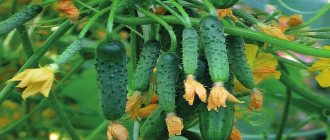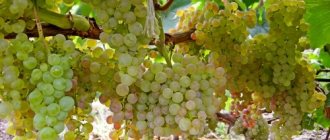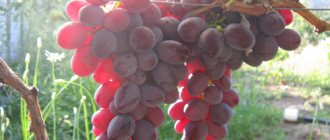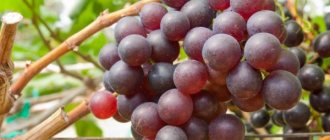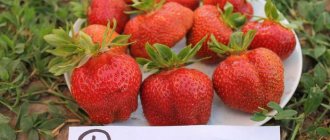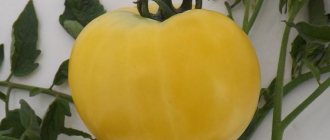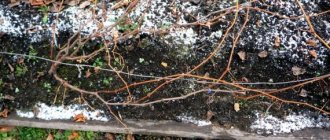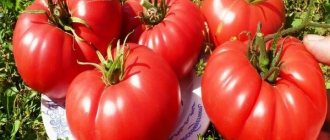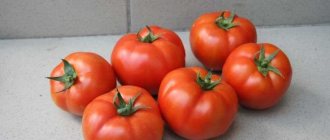Let's take a closer look at the characteristics and features of Arcadia:
The variety has its advantages and disadvantages
The variety has advantages
- Early ripening, bunches ripen simultaneously;
- Good frost resistance;
- In the third year it bears fruit abundantly, like an adult bush;
- Wonderful aroma;
- Mildew resistant;
- High yield;
- Bisexual;
- Transportable;
Disadvantages inherent in this variety
- Does not like high humidity (the berries may crack);
- Weak to oidium diseases, weakly resistant to gray rot;
- Does not like drafts, feels uncomfortable in the cold wind;
- Requires a lot of sun;
- It is necessary to normalize the bush, because the bush is often overloaded;
- When overloaded, the berries are crushed
Pros and cons of the variety
The advantages of "Arcadia" are: large fruits with excellent nutmeg taste, high yield, early ripeness and the ability to maintain excellent presentation when transported over long distances. Experts note a slight black spot lesion.
The variety is not highly frost-resistant, but has good regenerative abilities of vegetative organs.
The popularity of the variety was ensured by the high marketability and excellent taste of the fruits.
Disadvantages include susceptibility to oidium, as well as average resistance to mildew and gray rot. You can learn in detail about the causes and signs of these fungal diseases, as well as various ways to combat them, from the articles about the Laura and Preobrazhenie grape varieties on our website.
History of the variety
This type of grape was bred in Odessa by crossing dark parent varieties:
- "Moldova", which transferred resistance to bad weather conditions;
- "Cardinal" - endowed with a wonderful taste of berries.
This variety has been pleasing us since the 80s. It is loved not only by industrial vineyards, but also by private viticulture.
Middle name "Nastya".
Interesting feature: The parent varieties have dark skin, but “Arcadia” has acquired a light color.
About the history of selection of the Arcadia variety
The hybrid variety Arcadia, which is also known as “Nastya,” appeared a little over 20 years ago in the city of Odessa. And it was bred by breeders from the Institute of Viticulture and Winemaking named after V.E. Tairova from dark blue Moldova grapes and purple Cardinal.
It is interesting that despite the colors of the berries of its ancestors, Arcadia itself has light berries
So, the Moldova variety shared with Arcadia, good adaptation to climate change in the environment. But from the Cardinal variety the plant received all its properties of berries, which gardeners love so much.
Together with the light Arcadia, a pink variety of this variety was also bred, but during the first testing it showed low quality characteristics and was modified by selectors (better known as the Helios variety)
What time does Arcadia ripen?
Arcadia is an early ripening grape. When the ovaries have blossomed, count 120 days until you enjoy the ripe bunch. Depending on the growing region, the ripening period may vary by a couple of days, either earlier or later. In the temperate zone of Russia, the clusters ripen by mid-August, and in warm regions - earlier.
Features of the bush
- Arcadia has a tall bush. The branches grow intensively and quickly. About 60-70% of the branches are fruit-bearing.
- The flowers are bisexual. Arcadia pollinates itself, at the same time it is recommended to plant it close to other varieties for their pollination. Such as Laura and Talisman.
- The vine and leaves of Arcadia have the following characteristics:
- The leaf blades are wide, large, 5 parts. They have light bristles and are slightly pubescent on the reverse side. The bunch is large, can weigh from 700 to 1000 g.
- The shape of the berry is conical, the grape itself is dense.
- The foliage color is emerald-light with a whitish tint.
- The bark of the wood is rough with a reddish tint.
Bunches of Arcadia
Large and simply huge clusters of Arcadia delight the eye. Their density is average, their structure is branched. The maximum size grows to 2500g, of course, subject to all the features of agricultural technology.
Berries and taste
The grapes are large, weighing about 8-15 grams, the size of a 5 ruble coin. The shape of the berry is oval or heart-shaped. By the time the grapes ripen, they acquire a honey-amber hue.
Arcadia's pulp has a nutmeg aftertaste and crunches pleasantly. It is very sweet, juicy and dense.
Arcadia's tasting score out of 10 points was 8.5 points, which is a fairly good assessment of the quality of taste.
The grape has 1-2 seeds.
Sugar content ranges from 17.5% to 18.7% depending on the growing zone. Acidity ranges from 6.2 to 7 g/l.
Productivity of Arcadia
It is in the TOP grape varieties in terms of yield. Indicators can range from 20 kg to a maximum of 50 kg. Depends on the planting method. If planted using grafting, the fruits can be obtained the next year. If you plant it as a seedling, then next year you can get the first test bunch. Abundant fruiting begins in the 4th year. The optimal 4-arm bush formation and pruning according to the Guyot methodology. The bunches can hang ripened on the bush for a long time, the quality will not deteriorate.
Varieties of Arcadia grapes
Arcadia happens:
“Arcadia pink” - has pinkish grapes with a purple tint. It has a brighter taste than “classic Arcadia”. However, its berries and grizzies are slightly smaller and take longer to ripen (2 weeks later). But unlike golden Arcadia, its berries do not crack due to strong moisture.
“Arcadia early” has a faster ripening time. It lasts about 111 days. It is resistant to oidium and wasps like it less than the standard “arcadia”. However, it also has disadvantages. The berries and clusters are smaller, as well as less resistance to frost.
Beneficial features
- Contains a large amount of antioxidants that have a beneficial effect on the body and prolong youth. They contain many vitamins and microelements and have a positive effect on the body’s condition.
- Good for the blood. Saturates the blood with nitrogen, inhibits thrombosis, lowers cholesterol, normalizes blood pressure.
- Helps those suffering from bronchitis and promotes expectoration.
- Good for the nervous system, reduces fatigue, and is a good antidepressant.
- Improves digestion, relieves spasmodic pain during menstruation. It also serves as a good preventative against the formation of stones.
- Has a laxative and diuretic effect
Productivity and ripening time
The plant produces its first signal harvest in the 2nd year after planting, marketable fruiting begins in the 4th - the bushes yield an average of 25 kg.
When cultivating “Arcadia” in the steppe Crimea (city of Saki), a yield of 24.2 t/ha (18.16 kg per bush) was recorded.
Suitable soil and climatic conditions for the variety, competent agricultural technology and proper formation contribute to regular high yields. For example, in the natural conditions of the Kursk region, with a trellis 4-arm bush management system and pruning according to the Guyot system, three-year-old plantings demonstrated a productivity of 6.9 kg per plant or 7.4 t/ha (1062 bushes per 1 ha). In the Transcarpathian region, the yield indicators amounted to 4.4 kg per plant (12.3 t/ha).
Removable maturity occurs 115-125 days after bud break . The clusters can remain on the bush for a long time without deteriorating the quality of the fruit.
The berries are firmly held on the stalks and do not fall off even with delays in harvesting
In the agroclimatic conditions of the Odessa region and the Krasnodar Territory, the taste and aroma are revealed in the first ten days of August; in central Russia, the ripening period is postponed by 2-3 weeks (end of August - first ten days of September). A timely and competently harvested crop can be stored well in the refrigerator for more than 2 months. The juicy pulp is perfectly protected from damage by the dense skin, which is practically not damaged during transportation, so the variety is recommended both for private gardening and for industrial cultivation for commercial purposes.
The opinion of an experienced Russian gardener about the yield potential can be found in the following video:
How to plant Arcadia grapes
If you follow these tips, the planted variety will delight you with an abundance of berries in the near future.
Choosing the right seedlings:
- The root system should be healthy and not overdried.
- When cutting the tip of a seedling's trunk, the color of the cut should be light green, but not dry or brown.
- Before planting, it is necessary to trim, refresh the roots of the seedling and soak in warm (room temperature, settled) water with rooting agents or growth accelerators (up to 24 hours).
- Prepare a planting hole, after planting, water thoroughly and mulch.
Preparing a smart landing pit
- 0.7 cm. by 0.7 cm. Depth 60-70 cm.
- We lay drainage on the bottom (you can use broken bricks, stones, etc.)
- Lay a layer of soil, humus and fertilizers
- Spill a bucket of water
- Add the remaining soil
- In the middle we form a holi, place a seedling and straighten the roots.
- Slowly fill it with soil.
- Again water generously.
- Mulch the ground around the grapes.
- Place a support so you can tie up the young shoots later.
When preparing the pit, you can add 50 grams of superphosphate to it. Some winegrowers also add nitrophoska 50 grams.
IMPORTANT!!! The seedling must be planted in such a way that the ground level of the circle around the trunk is located below the sides of the planting hole. This will make it easier to cover for the winter and water in the future.
Famous varieties and their distinctive features
The basic, light grape variety allowed breeders to develop pink Arcadia, which is distinguished by a pronounced, specific taste and small berries, its clusters ripen longer, and its fruits are characterized by increased density.
The early variety is characterized by dense berries combined with reduced frost resistance; its clusters are much smaller than the parent grapes, but it is more resistant to insect damage and diseases and ripens very quickly.
How to grow grapes from seeds at home - tips for beginners and proper care of grapes (105 photos + video)
Is a grape a berry or a fruit: what is the correct name and what are the main differences? 115 photos of grapes
Holes on grape leaves - what to do and how to treat the grapes. Diseases, pests and 95 photos of problems with grapes
A detailed description of the Arcadia grape variety allows you to evaluate the benefits of this table vine, the fruits of which can be eaten raw and introduced into the diet to enrich it with beneficial vitamins and microelements necessary for the human body.
Selecting the right landing site and soil
Arcadia is demanding of quality soil. Prefers good drainage because... it does not tolerate excess moisture.
Prefers a place with good lighting, does not tolerate drafts and cool winds. The shadow falling on the bush will not have the best effect on the quality of the taste of the berry and the ripening period, so it is not advisable to plant Arcadia near tall trees and near buildings.
Important!!! When planting, it is important to consider the location of the trellises. It should be located from north to south.
Correct fit
Half the success when growing is healthy seedlings and a correctly chosen, prepared planting site.
How to choose quality seedlings when purchasing
Arcadia is grown from woody cuttings. It is best to buy seedlings from nurseries when they are at least 12 months old.
Criteria for choosing healthy material:
- the root section of a healthy cutting is white;
- the stem under the bark layer should be green;
- the buds do not fall off from a light touch and do not peel off;
- the root system is moist and developed.
Where to plant on the site
For the culture, you should choose a well-lit area protected from the wind. The location of groundwater must be at least 2.5 m from the ground surface. The soil for Arcadia needs to be fertile, loose, with good throughput capacity. Before planting, heavy soil is dug up with the addition of organic fertilizers (4 kg/1 m²).
Important! Severe waterlogging of the soil can cause root diseases. In addition, excess moisture will lead to crushing of the berries.
How to plant
The timing of planting lignified cuttings ranges from March to May inclusive, depending on the climate in the region.
Before planting, seedlings need to be prepared:
- Trim the shoot, leaving 1 cm before the first eye (there should be 4–5 buds in total on the seedling).
- Soak for a day in a solution of water and honey (1 l/1 tbsp.), which will help activate root growth.
- Dip the upper part of the cuttings into paraffin melted in a water bath (up to +75°C). This will protect from drying out and restrain the early blooming of the eyes.
- Shorten the roots by 1 cm.
A hole is dug up to 80 cm deep and 70 cm wide, a drainage of fine gravel is placed at the bottom, then a mixture of fertilizers: half a bucket of manure and 0.5 kg of charcoal.
Planting technology:
- A mound of soil is poured on top of the fertilizer.
- The seedling is placed in the hole, straightening the roots.
- Then fill the soil, lightly compacting it.
- When buried in the soil, the growth point of a new shoot is left on the surface, since the cuttings do not have a root collar.
- After planting, water the tree abundantly and mulch the tree trunk with sawdust or straw.
- When planting several plants, leave a distance of 2 m between the holes.
Video: how to plant grape seedlings
Watering and fertilizing
Arcadia requires regular, moderate watering. Prefers a lack of moisture than its excess. Excessive phlegm negatively affects the taste and quality of berries.
It is necessary to water specifically at the root; it is good if it is possible to carry out drip irrigation.
It is important to water before frost, approximately 10 days before frost, which will charge the bush for the winter and make this period easier for the plant.
IMPORTANT!!! To get a good harvest, you need to regularly water the plant before flowering. Control soil drying out during flowering and fruiting.
So, Arcadia can be watered during the growth period once or twice every 7 days (a bucket of water under the bush).
There is no need to water Arcadia daily. You just need to remember that if the bush is given good watering, the berries will form larger.
The main thing is NOT TO OVERFLOW!!! Arcadia does not tolerate this and will express her dissatisfaction through the crackling of the berries.
Feeding
Arcadia needs to be fed 2 times a year. In spring, it is preferable to fertilize with humus and a complex of minerals such as phosphorus and potassium. The bush is fed with organic fertilizers in the fall.
Young grapes do not need to be fed, because The food provided during planting is enough for him.
Fertilization scheme for an adult bush
Before flowering, as a rule, liquid minerals are used (nitrophoska together with boric acid). For organic connoisseurs, add manure.
Before setting fruit clusters, about 2 weeks, it should be fertilized with a solution of ammonium nitrate + potassium magnesia.
Before picking the berries (2 weeks) it will be good to feed with superphosphate and potassium.
Important!!! Follow the dosage as prescribed in the instructions. Otherwise, you can harm the berries and spoil the pulp. Berries can be saturated with excess microelements harmful to the human body.
Excessive feeding can burn the roots and leaves.
Grapes love phosphorus, potassium fertilizers and nitrogen. It is very good to feed with ash.
Feeding helps to obtain excellent growth and formation of the bush. Properly fed grapes will delight you with a good harvest.
Grape variety: description and characteristics
Selective breeding of table grapes of this variety has made it possible to combine a lot of positive properties in it; the distinctive characteristics of Arcadia are increased productivity and the ability to bear fruit early.
With good and properly organized, but uncomplicated care, strong, healthy bushes are grown in a summer cottage or garden, on which 55 to 75% of fruitful shoots are formed, the weight of ripened bunches ranges from 500-700 grams with large and juicy berries.
Arcadia pruning
Pruning can be done:
- in early spring, before the start of the plant growing season (cut out frozen buds and rotted vines);
- late autumn - from the end of October, when the leaves have fallen and the grapes are preparing for winter.
Arcadia prefers autumn pruning.
Any pruning method is suitable for shaping Arcadia.
A more common design consists of 4 sleeves, on which 8 to 12 buds are left. For an adult bush, up to 60 buds can be optimally left.
The bush must be rationed, one bunch per fruit branch.
Pruning must be done with a clean and sharp tool.
Comparison with other varieties
Let's compare the key characteristics of Arcadia with White Delight and Timur
| Variety name | Arcadia | Delight white | Timur |
| Ripening period | 110-120 days | 110-115 days | 105-115 days |
| Frost resistance | High, up to -28ºС | High, up to -25ºС | High, up to -25ºС |
| Productivity | Up to 50 kg per bush | Up to 50 kg per bush | Up to 20 kg per bush |
| Bunches | Up to 2 kg | Up to 2 kg | Up to 0.6 kg |
| Taste | Medium sweet with light nutmeg notes | Harmonious | Tart, with a hint of nutmeg |
| Color | Amber-honey | Cream | White-amber |
| Disease resistance | Average | High | High |
| Shelf life | Up to 4 months | Up to 3 months | Less than a month |
| Sugar accumulation | 14-16% | 19-26% | 17-22% |
| Acidity | 6 g/l | 5-9 g/l | 6-9 g/l |
Frost resistance and wintering of Arcadia
Moderate resistance to frost. Withstands up to - 21 º C (without shelter). Kidney preservation is up to 70%.
To preserve the bush and the future harvest, and also if a winter without snow is predicted, it is necessary to cover the grapes until the first frost. Grapes are not afraid of frosts down to 10 degrees. Even useful. The vine is charging. There is no need to cover the grapes too early.
With shelter, the grapes will withstand frosts even down to 26 degrees below zero.
The vines can be laid on the ground and covered with a mound up to 30 cm in height.
If there are severe frosts in your region, it would not hurt to cover it with additional spruce branches and straw. It is also effective and tested by me to cover with polyflex slabs and cover the sides with straw, as well as agrofibre.
Recommendation from me!!! Do not cover the grapes early, because... field mice have not yet decided on their wintering place, and they will comfortably settle down in the shelter of your vineyard and feast on the succulent vines in winter. Therefore, let the first frosts pass to 7-9 degrees, and then start covering.
Recommendation from me!!! Usually, after the first frost, warming comes, which can cause condensation in the shelter and cause the vine to begin to rot. When it warms up, you will have to open the shelter.
Before covering the vines for wintering, you should
- Trim
- Feed the grapes
- Water thoroughly with warm water.
- Treat the bush prophylactically against diseases.
- Then you can start covering. Be sure to leave gaps in the structure for ventilation.
Reviews
Reviews from winegrowers about the Arcadia variety are mostly positive. It is valued for its high yield, ease of care and excellent taste of the berries.
Vladislav, Rossosh: “Several years ago I added cuttings from Arcadia to my collection. Since then, I can’t get enough of this amazingly productive variety. I grow grapes for myself and for sale. At the market, people buy Arcadia more willingly than Kishmish, even despite the presence of seeds. The only negative is that the berries are not suitable for wine production, since their sugar content is not up to standard. You need at least 20%, but in Arcadia it’s only 15-16%. The output is a fermented compote.”
Irina, Smolensk: “ Arcadia is one of the favorite varieties of light grapes. The berries have an excellent taste, they have more sweetness than acid, but they are not cloyingly sweet. The grapes are unpretentious in care, they like moderate watering and a lot of sun. In unfavorable years, it suffers from powdery mildew and therefore requires preventive treatment. I use Bordeaux mixture."
Cultivation regions
Arcadia grows magnificently in Crimea, southern Ukraine, and Belarus. The winegrowers of the North Caucasus and central Russia are very fond of it. Grows well in the Moscow region and Tver region. In cooler regions, simply covering it for the winter is sufficient. Choose the right planting location in the sun and in places without drafts and cold winds.
What type does it belong to?
Arcadia is a self-pollinating table variety.
It gained popularity due to its early ripening and frost resistance.
Diseases and pests
Resistance to fungal diseases is low.
It is advisable to carry out preventive treatment, for this it is tedious to spray 2 times, in spring and autumn, at least with Bordeaux mixture, or with insecticides and fingicides.
Mildew resistant. 2-3 points
You can use this scheme:
Start of growth – 1% Bordeaux mixture + 100g. Colloidal sulfur per 10 liters of water.
Before flowering – 40 grams of copper chloride + 100 grams of colloidal sulfur + a spoonful of washing powder per 10 liters.
Stage “peas”: Fungicide Strobi + Kristalon (Aquarin, Humat).
Pests simply love this variety.
Birds need to be scared away with scarecrows and firecrackers; large clusters can be covered with mesh bags. You also need to fight ticks, wasps and mice, and weevils using professional insecticides.
To kill wasps, you can use dichlorvos. The most effective way is timely harvesting, because... they are attracted to the juice from overripe, bursting berries.
To prevent mice from getting in, the branches need to be treated with Nitrafen in the fall.
conclusions
Arcadia grapes are included in the TOP 5 and are a favorite of winegrowers. The variety has a high yield, is early ripening with a delicious aroma of berries. It has many advantages and is easy to grow.
Features of cultivation
Arcadia grapes are not recommended for beginners, because despite a certain unpretentiousness, they require careful care.
Expert opinion
Nikolay Kiushkin
Winegrower with 10 years of experience, blogger
Arcadia is a productive market variety whose lower buds bear fruit best. The ripening of the vine is worse than that of many other varieties. The taste is harmonious. The taste of nutmeg acquires only in September, but it may not be there if the autumn is cold. It is resistant to midleaf about the same as Kodryanka.
Planting and Harvest Time
The holes for planting must be prepared before the end of March, and the seedlings themselves must be rooted in April. The first harvest can be obtained two years after planting, but it is not worth collecting.
Arcadia begins to bear fruit fully in the third or fourth year.
Watering and fertilizers
Grape bushes must be watered regularly so that the berries fill with juice and grow large enough. When heavy watering is necessary:
- before the bush blooms;
- in dry weather;
- before planting the crop;
- for moisture recharging of the soil before insulation for the winter.
At the specified time, it is necessary to water the grapes a couple of times a week at the rate of 10-15 liters per bush.
Feeding is mainly required for adult plants, since young Arcadia bushes usually have enough nutrients contained in the soil. How to properly fertilize adult plants:
- Before flowering - with manure or liquid mineral fertilizers.
- A couple of weeks before the formation of the ovaries - a solution of potassium magnesia and ammonium nitrate.
- A couple of weeks before harvesting - fertilizers containing potassium and superphosphates.
As gardeners note, there should not be a lot of nitrogen in the soil, but grapes respond very well to fertilizers with phosphorus.
Trimming
One of the most important aspects of grape care. Allows you to solve key problems of bush development.
When pruning occurs:
- rejuvenation;
- formation of new shoots;
- stimulating the growth of existing shoots.
Although both options are suitable for Arcadia grapes, when grown in the middle climate zone, it is recommended to remove excess shoots in the fall. In this case, the plant will overwinter better.
When to prune:
- in early spring - remove frozen shoots;
- in late autumn - cut off the weathered areas.
Which shoots to remove:
- those that bear fruit, new clusters will no longer form on them;
- weak - the best product can be obtained only from the strongest shoots.
Note!
As experienced gardeners note, in order to form large and juicy berries, one bunch of grapes should be formed on one shoot.
With regular, proper pruning, you can get a rich harvest. Otherwise, the vine will be overloaded, and the berries will not have time to ripen in time, or will be crushed. It is recommended to adhere to the following rules:
- leave no more than 40 eyes per bush;
- leave no more than 4 sleeves;
- When flowering, normalize the brushes so that one bunch is formed on one shoot;
- After winter, remove all frozen shoots.
Diseases and pests
Oidium
Mildew (downy mildew)
Wasps
The Arcadia variety has average resistance to infection.
Diseases:
- mildew or downy mildew - resistance at 3.5 points, requires an average of two preventive sprayings;
- Omidium - standard preventive treatment is required.
Protection against fungal diseases:
- medium concentration potassium permanganate solution;
- mullein solution;
- preparations based on colloidal or ground sulfur.
Pest protection:
- Insects - wasps, leaf rollers, phylloxera, flea beetles, borers, weevils, leaf miners. To combat them, you can use insecticides, acaricides, chlorophos, dichlorvos and boric acid.
- Mice. They pose a threat in autumn and winter, when they are in search of food and can chew on the vine. To protect the bush from them, you can spray the branches with nitrafen. Or, during insulation, place rubber or burnt wool next to the vine so that the pungent odors repel rodents.
- Birds. In many regions they are repelled by birds of prey, such as kites or hawks. It wouldn't hurt to get a cat. You can also install a scarecrow or cover planting areas with metal or polymer nets.
It is undesirable to use fishing nets made from fishing line, because birds get entangled in them and die.
Most often, the presentation of grapes is spoiled by wasps. This occurs when the berries become overripe and burst, releasing a sweet, aromatic juice that attracts insects. To avoid this, it is recommended to harvest the crop as soon as possible after ripening.
Methods of propagation of grapes
This grape variety can be propagated in two ways:
- planting seedlings (this method is said to improve the taste);
- by grafting individual bushes, thereby the plant will bear fruit faster.
It is recommended to plant the bushes at a distance of 2 m from each other. The root system of the planting material should be white, and the cut color should be green. The tips of the roots are trimmed, their length should be approximately 12 cm.
Arcadia is grafted into a split, which makes it possible to obtain a stable and fruit-bearing plant.
Features of seasonal care
When growing Arcadia, you need to control the amount of moisture, form and trim the bush correctly. We should not forget about fertilizing and soil care.
Watering
Soil irrigation method: dig a ditch within a radius of 50 cm from the trunk, pouring an average of 2 buckets of water per bush. Water rarely, from the moment the buds swell until the end of the flowering period. During the fruiting period, the plants are not watered. The procedure is resumed after harvesting.
Find out in more detail how to properly and how often water grapes in the summer.
Top dressing
In the first year of life, a young plant will have enough fertilizer provided during planting.
Adult plants are fertilized using the following technology:
- The first feeding is before flowering with liquid mineral or organic compounds. When using manure, the solution is prepared in the following proportion: 2 kg/10 l of water/1 m². Mineral - nitrophoska (65 g), boric acid (6 g) dissolved in 10 liters of water.
- The second procedure is two weeks before the formation of fruit ovaries. For 1 m², prepare an aqueous solution of ammonium nitrate (20 g), potassium magnesia (6 g) per 10 liters of water.
- The third feeding is 14 days before harvesting. To increase the fruit mass, add 20 g of superphosphate and potassium per 10 liters of water.
Support and garter of shoots
The variety grows quickly and forms heavy clusters when fruiting, so it needs a garter for support. The trellis method is used: the supports are installed at a distance of 3 m from each other. The first row of rope stretched between them is secured at a distance of 50 cm from the surface of the earth. As the bush grows, usually in the second year after planting, the vine is tied to the bottom row of the trellis. The rows of ropes have a distance of 30–40 cm between each other.
Important! Trellis garter allows you to monitor the density of foliage, thinning it in time. Thanks to this method, all parts of the plant are evenly heated by the sun.
Soil care
The tree trunk circle and row spacing should be kept clean. It is necessary to regularly weed weeds, which draw moisture and nutrients from the soil. Weeding is combined with loosening to saturate the soil with oxygen. To preserve moisture and protect from overheating, the soil around the bush is covered with mulch.
You can use materials that are on hand:
- forest moss;
- sawdust;
- straw;
- freshly cut grass.
Trimming
The young bush is initially formed into 2–3 stems, removing weak shoots.
Subtleties of the procedure:
- After winter, the bush may have rotted or frozen shoots under cover. They must be removed before sap flow begins, so that the plant spends energy only on feeding healthy and strong shoots.
- In the summer, the emerging mustaches are removed, which make it difficult for the fruit to ripen, taking away moisture and nutrition.
- In the fall, to facilitate wintering, the vine is pruned, leaving a total of up to 30–35 buds.
Did you know? The grapes owe the pruning procedure to the donkey. Ancient gardeners noticed that vines eaten by animals bear fruit better.
Cold protection
In winter, the stems of young bushes are hilled, creating a mound 30 cm high. In regions with harsh winters, they are additionally covered with agrofibre or coniferous branches (spruce branches). An adult vine can survive without shelter in moderate winter temperatures. In regions with frosty winters, the vine must be removed from the trellis, bent to the ground, and then covered with straw and spruce branches.
Areas of application of the variety
Arcadia is one of the most popular cultivated grape varieties grown for sale. For many summer residents it has become the best solution, as it is unpretentious, ripens quickly, and has a delicate taste. However, this variety is not recommended for cultivation by beginners in gardening.
It can be found more often than others on the store counter or at the market. It is also grown to make wine. And resourceful summer residents grow it not only for food, but also decorate their gardens with gazebos with vines during the ripening period.
Interesting! There is no doubt about the beneficial properties of Arcadia grapes. Even ancient healers said that a person who eats an apple a day will become healthy. This applies not only to apples, but also to grapes. It is believed that a person should eat at least 10 kg of grapes per year, but according to statistics, about 1 kg per person per year.
Arcadia grapes can be used to saturate the body with vitamins:
- vitamins of group A, B, C, PP;
- iron, zinc, cobalt, magnesium;
- glucose, fructose, which are quickly absorbed by the body.
It cannot be said that it is very often used as a raw material for making wine. This is because there are better varieties for this purpose. However, judging by user reviews, Arcadia can be used for homemade wine, or to produce different types of juices and alcoholic beverages on an industrial scale.
